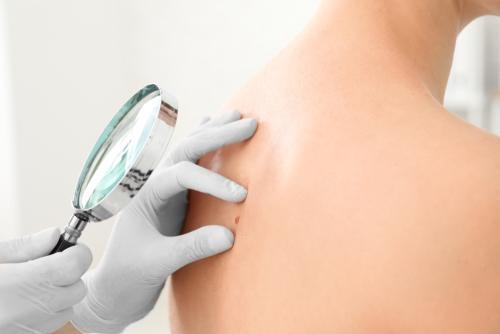
Protect your skin against cancer and spot early warning signs.
Skin cancer remains one of the most prevalent cancers in the US; however, one of the biggest causes of skin cancer is also completely preventable: Exposure to UV light (both natural and artificial) can impact your likelihood of developing skin cancer at some point during your lifetime. While seeing a dermatologist once a year for a skin cancer screening is important, here are some tips that you can start following now to reduce your risk for skin cancer,
Apply Sunscreen Every Day
If you’re going to spend any time out in the sun you need to apply a broad-spectrum sunscreen that protects against both UVA and UVB rays. Opt for a sunscreen with at least SPF 30 and make sure to apply a generous amount (about 1 ounce of sunscreen for the entire body) at least 15 minutes before going outside.
Reapply Sunscreen Throughout the Day
If you’re going to go outside, the best bet is to always apply sunscreen, even if you’re just going for a drive (the sun’s rays can still reach your skin through car windows and the sunroof). Yes, the sun’s rays can even damage your skin on rainy, cloudy and snowy days! If you’re spending a considerable amount of time outdoors (e.g. playing sports or enjoying the beach) you will want to reapply sunscreen every 2 hours, or immediately after getting out of the water. The same rule applies if you’re sweating. You can never reapply too often!
Know the Best Times to Go Outside
The sun’s rays are most potent between the hours of 10 am-3 pm. This means that you are more likely to get sunburned during these hours (it can take less than 15 minutes to get sunburned). So, if you spend hours outside you can only imagine just how bad this can be on your skin. Limit time in the sun during these hours, or at the very least use an umbrella or seek the shade if you must be outside.
Recognize the Early Warning Signs of Skin Cancer
The only way to catch skin cancer early when it’s treatable is by performing self-exams on your body at least once a month. Make sure that you are checking every area of your body, from your scalp to between your toes. After all, while skin cancer most often develops in areas exposed to the sun, this isn’t always the case.
When examining growths and moles you should look for changes in,
- Color
- Shape
- Symmetry
- Size
Healthy moles stay relatively the same over time, so if you notice any changes that have you concerned then it’s time to schedule a skin cancer evaluation with a dermatologist.
With summer just around the corner, it’s important that you protect your skin from cancer and sun-related damage. If you’ve never gotten a skin cancer screening, it’s a simple, painless checkup performed by a dermatologist, and it shouldn’t be missed.
